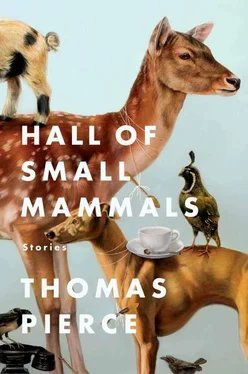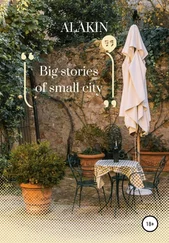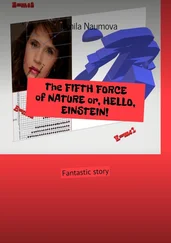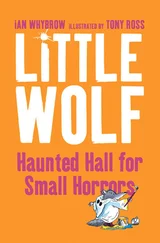“I suspect it wouldn’t be very good at hiding behind trees,” the man said, “or anything else.”
“You know,” another man said, tugging at his wiry gray chin beard, “I’ve heard Indian stories about beings that used to stalk this continent. They say that their ancestors were giants, just as big as the buffalo and lions that lived here. They say everything was bigger back then, including us.”
“I doubt that very much,” Anders said. “Every creation is an improvement upon the last. We in the Present Age are God’s most perfect creation. Everything that came before us, God destroyed for a reason.”
“But giant men. Can you imagine?”
“Is it a form of crocodile?” the woman asked. “That’s what I heard.”
Anders explained that though the bones indicated certain lizard qualities, it was not a crocodile but a distinct and unrelated species, heretofore undiscovered and unknown.
“Heretofore undiscovered and unknown,” the man across from Anders repeated, his squirrel’s tail of a mustache shining with roast beef grease. “Now you sound like Ol’ Dab.”
“Dabney Dubose,” Mrs. Lang said. “You know him, then?”
“My whole life, just about. Been all over the world with him. London, Calcutta, Constantinople. No place that man hasn’t traveled to. If anyone can figure what the monster is, it’s him.”
“To be well traveled hardly qualifies him for this,” Anders said.
“Not the travel,” the man said, and formed two fingers into prongs that poked away from his eyes. “It’s this that qualifies him.”
“And what is that, exactly?” Mrs. Lang asked.
“Sight,” he said. “Insight. Outsight. Pastsight. Futuresight. Take your pick of the sights.”
“Well,” Mrs. Lang said. “I for one think we should defer to Dr. Anders’s authority on these matters.”
Anders nodded gratefully in her direction — though he couldn’t help wondering if she was right to do so.
• • •
Across town, at that very moment, a behemoth was being born.
Dabney Dubose was not a patient man, and he had doubts about having his show ready in time with Anders at the helm. Perhaps another naturalist from our Academy might have been better suited to the task, it’s true. But then again, no other of our naturalists would have dared partner with such an unscrupulous man. As Anders was feasting on beef and potatoes and then later as he dreamed in the big white bed set up for him on the first floor of the boardinghouse, Dubose and his crew continued their work by the light of lanterns hanging from barn nails.
“Make it bigger,” he instructed his team. “Do what you have to do. Put cork between the joints. I want it on all fours. That horny spike there — I want that on the head.”
Mr. Gustafson, reinstated as architect, started with the feet, connecting tarsals and phalanges and claws with wires and rods. As the beast began to take shape on its wagon pedestal, Dubose clapped and cheered. Rough plaster molds were made to fill in the missing sections. When the rib cage collapsed, Gustafson had them insert wooden dowels where the organs would have been. Bones were attached to bone, even when they did not properly join. Unnecessary parts were tossed aside. With all four legs on the ground, the spine sagged in the middle like a toothy smile. The tail pointed skyward at the tip. At the other end, the neck craned up and forward, as if the animal had just been caught in the act of feeding on a fresh carcass.
The creature they were building of course bore no resemblance to what the physiology of its bones actually suggested. Dubose brought in his tailor to measure the beast and test various fabrics that might serve as a skin. They tried cotton and silk and wool but ultimately decided on a thin pounded leather, which they could ornament with layers of iridescent flakes. Dubose wanted to leave the top ridge of the spine exposed as proof that that their monster contained the actual bones. The tailor worked from the bottom up and, when he reached the spine, suggested that he glue on horsehair, dyed gray and blond, to resemble a scraggly mane. “Do it,” Dubose said. As the tailor’s assistants stitched the silvery flakes into the hide, the creature began to shimmer under the burning lamps.
By midmorning, when Anders returned, he was stunned by the overnight transfiguration of the creature. What had been scattered and flat across the straw now towered overhead, twelve feet tall and at least thirty feet long, atop the cart bed. With its sparkling scales and hideous mane, the headless chimera was like something out of the Greek myths. Never in his wildest dreams had Anders imagined the behemoths as such.
“As you can see”—Dubose stepped toward him—“we took the liberty of continuing your work last night. Your guidance was crucial.”
“This is all wrong,” Anders said. “You need to strip it back down.”
“As for the head,” Dubose said, undeterred, “do you have any ideas? I suppose we’ll need to dream up something, won’t we?”
“Dream up?”
“Yes, since we don’t have those bones.”
“But if we dream it up, then how will it be accurate?”
“I take your point, but people will be let down if it’s headless. Just give me a rough idea. Do you think it had tusks like the mammoths? That would be interesting, wouldn’t it? I have a few in my collection that we could include.”
“No, I don’t think it had tusks. We can’t know what it had. You… you might as well make it a Cyclops. That’s how little we know. Why do we need to provide a head? Put up a sign, explain to people that the head has not yet been located. People will understand.”
“Yes,” Dubose said, nodding. “Yes, I suppose you’re right. We’ll figure something out, I’m sure. You will be coming to the show on Saturday, I hope? Your admission will be complimentary, that goes without saying.”
He escorted Anders out of the barn and shook his hand amicably. “See you then,” the showman said, and returned to his project. In a daze Anders wandered back in the direction of the ramshackle farmhouse, his toes so cold and numb in the tips of his shoes that he had to subtract them from the idea of his feet. It was a drizzly day, the earth and sky washed in gray. Temp appeared on the horizon as a peachy dot, moving toward him at a run. As the distance closed, Anders was surprised to discover certain changes in his assistant. Temp’s hair had been brushed flat and parted neatly down the middle. Not only that, the child was wearing an oversized dress with a white ruffled collar and a dusty too-long hem. Temp, he realized, was a girl.
“You like it?” she asked, pulling the loose fabric tighter at the hips. “I didn’t want it, but my daddy said it was time I dressed right.”
Anders didn’t know what to say. That he’d so grossly miscategorized a member of his own species was no doubt distressing. How could he understand a creature that was thousands of years behind him, if he couldn’t make sense of the world directly in front of him?
Temp smiled politely and held out a small gray bone. “There’s a whole pile of these in the barn,” she said. “The ones they couldn’t get to fit right. I don’t think anyone will miss it.”
Anders accepted the bone. It was one of the creature’s ribs. “Did they see you take it?” he asked, already tucking the bone into his jacket pocket.
“I doubt it,” she said. “They’re very busy.”
• •
Of all those forms now passed into extinction, the Gollysaurus, as I have dubbed it, is the most impressive and inspiring. Anders’s letter, composed later that afternoon in his room at the boardinghouse, reached us far too late to be of any use. Contained therein was what he called “a serious attempt at objective description despite his overwhelming excitement.” Only in his conclusion did he reveal to us his failure to procure the bones, and Dubose’s scheme to use them as an exhibit for his Monsters from a Darker Age . But through other sources we had been kept well apprised of developments in Golly and our representatives were already en route to try to repair the situation.
Читать дальше












